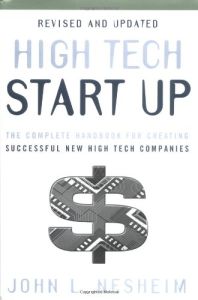Join getAbstract to access the summary!

Join getAbstract to access the summary!
John L. Nesheim
High Tech Start Up
The Complete Handbook for Creating Successful New High Tech Companies
Free Press, 2000
What's inside?
If that pregnant gleam in your eye means you want to give birth to your very own bouncing, baby tech firm, read this manual before you quit your day job.
Recommendation
Using enormous detail and plenty of case studies, John L. Nesheim presents a step-by-step plan for starting a new high tech company. Given the abundance of insider insights, his guidebook could be a critical part of your training if you are contemplating such a venture. After reading this book, you’ll at least know what you’re getting yourself into before you make that first call to your newly acquired corporate attorney. Nesheim designed his book to be informative, also, to venture capitalists and corporate development managers who work with new ventures. Nesheim backs up his authoritative tone with plenty of facts and figures (updated in 2000 in this second edition) So, if that pregnant gleam in your eye relates to a bouncing, baby tech firm, getAbstract recommends this book as part of your planning process, with the caveat that times have changed a lot for start ups since this book went to press, so look for some history and some evergreen nuggets of advice.
Summary
About the Author
John L. Nesheim is an engineer and Silicon Valley veteran. He teaches entrepreneurship at Cornell University and other schools in Asia and Europe. Entrepreneurs, investors, governments, universities, corporations and Wall Street experts use his research findings on high tech start ups to increase their understanding of entrepreneurial effectiveness. He also runs startupweb.com.



















Comment on this summary